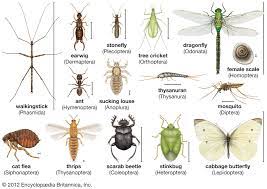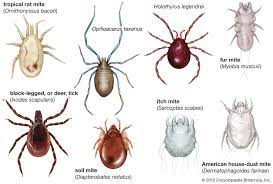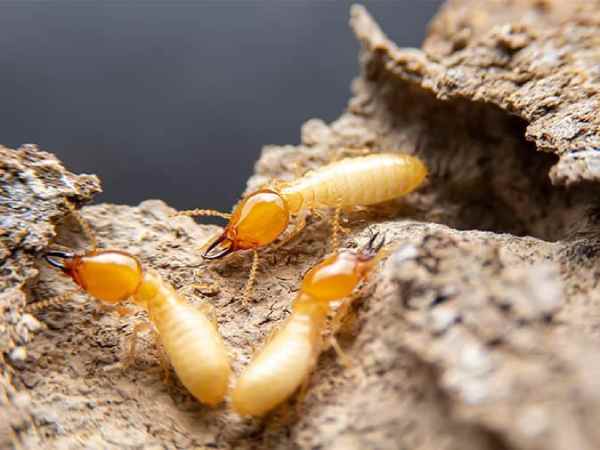The animal kingdom is a vast and diverse realm, teeming with an astonishing array of creatures, each with its own unique adaptations and characteristics. While mammals like lions, elephants, and dolphins often steal the limelight, there exists an equally captivating world of animals that are not mammals. These non-mammalian wonders defy the common conventions of warm-blooded, milk-producing creatures, showcasing the remarkable diversity of life on Earth.
From the soaring majesty of birds to the enigmatic depths inhabited by fish and the ancient reptilian ancestors that still roam today, this article embarks on a thrilling journey through the animal kingdom’s lesser-celebrated inhabitants. We will delve into the extraordinary lives of creatures such as the electric eel, capable of generating shocks powerful enough to stun prey, and the mesmerizingly colorful world of coral reefs, where invertebrates like corals and jellyfish reign supreme.
Prepare to be amazed by the astonishing adaptations, survival strategies, and ecological roles of these animals that are not mammals, shedding light on the intricate tapestry of life that surrounds us, often hidden in plain sight.
Definition of Non-Mammalian Animals:
Non-mammalian animals encompass a vast group of organisms that do not fall within the category of mammals. Unlike mammals, these creatures lack mammary glands, do not give birth to live young, and typically do not regulate their body temperature internally. This group includes birds, reptiles, amphibians, fish, and an incredible variety of invertebrates, each with its own unique biological features and evolutionary adaptations.
Importance of Studying Non-Mammalian Animals:
Studying non-mammalian animals is crucial for several reasons. First, it allows us to gain a comprehensive understanding of Earth’s biodiversity and evolutionary history. Second, these animals play vital roles in ecosystems as pollinators, predators, scavengers, and more, making their conservation essential. Additionally, research on non-mammalian animals has yielded numerous medical breakthroughs, leading to advancements in fields like genetics and neuroscience. Finally, the study of non-mammalian animals can provide insights into our own evolutionary history and ecological impact, helping us make informed decisions for a more sustainable future.
Diversity of Non-Mammalian Animals:
The diversity among non-mammalian animals is staggering. From the dazzling colors of coral reef inhabitants to the silent elegance of birds in flight, and the ancient reptiles that have withstood the test of time, these creatures span an astounding range of forms, functions, and habitats. This diversity is a testament to the incredible adaptability and evolution that have shaped life on Earth for millions of years.
Overview of Invertebrates:
Invertebrates, a substantial group of non-mammalian animals, lack a vertebral column. They make up a significant portion of Earth’s biodiversity and include insects, arachnids, mollusks, and crustaceans. Their roles in ecosystems, from decomposers to pollinators, are invaluable, and their evolutionary histories are richly intricate.
Insects

Insects, the largest and most diverse group of invertebrates, encompass a staggering variety of species on our planet. With their segmented bodies, exoskeletons, and six-legged locomotion, they have conquered virtually every corner of the Earth. From the industrious honeybee pollinating our crops to the elegant monarch butterfly embarking on epic migrations, insects play indispensable roles in ecosystems.
They serve as pollinators for countless plants, decomposers breaking down organic matter, and prey for various animals. Despite their small size, insects wield significant ecological influence and are crucial to the health of terrestrial ecosystems. They also continue to captivate scientists with their intricate behaviors, such as the sophisticated social structures of ants and the metamorphic transformations of butterflies, making them subjects of intense study and wonder.
Arachnids

Arachnids form a fascinating subgroup of invertebrates, characterized by their typically eight-legged bodies and diverse adaptations. This group includes spiders, scorpions, ticks, and mites, each with its unique features and ecological roles. Spiders, for instance, are skilled silk-spinners, using their silk to build webs to capture prey and create egg sacs. Scorpions, armed with venomous stingers, are skilled predators in arid regions. Ticks and mites can be both parasites and decomposers, contributing to nutrient cycling in ecosystems.
Mollusks

Mollusks, with their soft, unsegmented bodies and often protective shells, comprise a diverse and captivating group of invertebrates. This category includes iconic animals such as snails, clams, octopuses, and squids. Each mollusk exhibits unique characteristics and lifestyles, reflecting its adaptability to various aquatic and terrestrial environments.
Snails, recognizable by their spiral shells, are found in a wide range of habitats, from gardens to deep-sea hydrothermal vents. They play roles as herbivores, scavengers, and even hosts to parasitic worms. Clams, with their bivalve shells, are filter feeders that help maintain water quality in aquatic ecosystems.
Octopuses and squids, on the other hand, are celebrated for their intelligence and extraordinary adaptations. These cephalopods possess highly developed nervous systems and are renowned for their problem-solving abilities and complex behaviors. They also employ color-changing techniques for camouflage and communication.
Crustaceans

Crustaceans, a diverse group of arthropods, are primarily aquatic animals, although some, like terrestrial crabs, have adapted to life on land. With their exoskeletons, jointed appendages, and often complex body structures, they have conquered marine and freshwater ecosystems worldwide.
Crustaceans exhibit a wide range of adaptations and behaviors. Lobsters, known for their size and powerful claws, are carnivorous scavengers, while shrimp are smaller and serve as both prey and predators in aquatic food webs. Crabs, with their distinctive sideways movement and hard exoskeletons, inhabit intertidal zones and various coastal environments.
Introduction to Fish:
Fish, the aquatic wonders of the animal kingdom, have evolved a remarkable array of adaptations for life beneath the waves. With their diverse body shapes, behaviors, and habitats, fish showcase nature’s ingenious solutions to the challenges of underwater existence. From the tiny seahorse to the colossal whale shark, fish are a testament to the boundless diversity of life in our oceans and freshwater ecosystems.
Bony Fish (Osteichthyes)
Bony fish, or Osteichthyes, represent the most numerous and diverse group of vertebrates on Earth. With their skeleton composed of bone, they are distinct from cartilaginous fish (Chondrichthyes) like sharks and rays. Bony fish inhabit an astonishing range of aquatic environments, from freshwater lakes and rivers to the vast expanses of the ocean.
Their diversity is evident in their body shapes, behaviors, and adaptations. From the graceful movements of schools of tropical reef fish to the astonishing camouflage abilities of anglerfish in the deep sea, bony fish have evolved an array of strategies for survival.
These fish play vital roles in aquatic ecosystems, serving as both predators and prey. They are also of immense economic importance, supporting global fisheries and providing a source of protein for millions of people. Bony fish exemplify the power of evolution to shape life forms to suit diverse aquatic niches.
Cartilaginous Fish (Chondrichthyes)
Cartilaginous fish, or Chondrichthyes, encompass a remarkable group of marine animals, including sharks, rays, and skates. Unlike bony fish, their skeletons are made of cartilage, giving them a distinctive appearance and buoyancy in water.
Sharks, as apex predators, are integral to marine food chains and play a vital role in maintaining the health of ocean ecosystems. Their diverse species exhibit a wide range of behaviors and adaptations, from the ferocious hunting tactics of great white sharks to the filter-feeding habits of whale sharks.
Rays and skates are flattened relatives of sharks, often found on the ocean floor. They are adapted for life in sandy or muddy habitats, using specialized mouthparts to feed on small invertebrates. Some rays, like manta rays, are known for their graceful swimming and wing-like pectoral fins.
Understanding Amphibians:
Amphibians, with their unique life cycles and amphibious lifestyles, bridge the gap between aquatic and terrestrial environments. They include frogs, toads, salamanders, and newts. These creatures are not only fascinating in their own right but also serve as indicators of environmental health due to their sensitivity to changes in water quality and habitat.
Frogs and Toads
Frogs and toads are a diverse group of amphibians known for their unique life cycles, distinctive appearances, and remarkable adaptations. These creatures have captured the imagination of people worldwide with their varied colors, calls, and ecological roles.
Frogs and toads share a similar body plan, with long hind legs adapted for jumping and catching prey. They are semi-aquatic, inhabiting both terrestrial and aquatic environments, from lush rainforests to arid deserts. One notable difference is that toads typically have dry, warty skin, while frogs have smoother, moist skin.
These amphibians are vital components of ecosystems, serving as both predators and prey. Their diet includes insects, invertebrates, and even small vertebrates, making them key players in controlling insect populations. Furthermore, they serve as bioindicators, reflecting the health of aquatic habitats through their permeable skin.
Frogs and toads also hold cultural significance, often featuring in folklore, myths, and scientific research. However, they face threats such as habitat loss, pollution, and disease, making conservation efforts crucial to safeguard their populations and preserve the delicate balance of the ecosystems they inhabit.
Salamanders and Newts
Salamanders and newts, known for their slender bodies and moist, delicate skin, are captivating amphibians that often inhabit damp terrestrial and aquatic habitats. These creatures exhibit an array of adaptations and behaviors, making them subjects of scientific fascination and conservation concern.
Salamanders and newts are characterized by their elongated bodies, long tails, and the ability to regenerate lost limbs, a remarkable feat among vertebrates. Their diverse species inhabit a range of environments, from cool mountain streams and woodland ponds to underground burrows.
These amphibians play vital roles in ecosystems as both predators and prey. Their diet includes insects, invertebrates, and even small vertebrates, contributing to nutrient cycling and controlling populations of various organisms. Salamanders are particularly sensitive to environmental changes, making them valuable bioindicators of ecosystem health.
Reptiles:
Reptiles, the descendants of ancient dinosaurs, have evolved into a diverse group of animals that occupy a variety of niches worldwide. From venomous snakes to armored turtles and swift lizards, reptiles demonstrate the power of adaptation and survival.
Snakes
Snakes are a fascinating group of reptiles known for their elongated, limbless bodies and wide-ranging adaptations. With over 3,000 species found on every continent except Antarctica, snakes have evolved diverse behaviors and survival strategies.
Some snakes, like the venomous pit vipers, rely on venom to immobilize prey, while others, such as constrictors like pythons, use their powerful muscles to squeeze and subdue their meals. Snakes can be arboreal, fossorial, or aquatic, occupying niches from treetops to underground burrows to freshwater habitats.
Their highly specialized adaptations include heat-sensing pits, specialized fangs, and cryptic coloration for camouflage. Snakes are crucial components of ecosystems, helping control prey populations and serving as prey themselves for various predators.
While some species elicit fear, snakes also hold cultural and ecological significance. They have inspired myths, legends, and scientific curiosity, shedding light on the complex relationships between predators and prey in the natural world.
Turtles and Tortoises
Turtles and tortoises are ancient and iconic reptiles with a shell as their defining feature. They are found in a wide range of habitats, from terrestrial tortoises in arid deserts to aquatic turtles in freshwater and marine environments.
Turtles and tortoises have adapted to various ecological niches, and their unique characteristics make them captivating subjects of study and conservation efforts. Terrestrial tortoises, like the Galápagos tortoises, have evolved impressive longevity, with some individuals living well over a century. Aquatic turtles, such as sea turtles, undertake incredible long-distance migrations between their nesting and feeding grounds, navigating vast ocean expanses.
The shell, composed of bone and keratin, serves as a protective fortress for these creatures, providing them with both armor and buoyancy. Turtles and tortoises occupy critical roles in their ecosystems as herbivores, omnivores, and even predators, contributing to nutrient cycling and shaping plant populations.
Lizards
Lizards, a diverse group of reptiles, are known for their scaly bodies, elongated tails, and remarkable adaptability. With over 6,000 species, they have conquered a wide range of habitats, from deserts and rainforests to rocky outcrops and urban environments.
Lizards exhibit a wide array of behaviors and adaptations. Some, like chameleons, are renowned for their color-changing abilities and specialized tongue structures for capturing prey. Geckos are known for their adhesive toe pads, allowing them to climb vertical surfaces with ease. Others, like the Gila monster and Komodo dragon, are venomous, using toxic saliva to immobilize prey.
These reptiles serve essential ecological roles as herbivores, insectivores, and predators, contributing to ecosystem dynamics and controlling pest populations. Lizards are also crucial prey for a variety of predators, including birds of prey, snakes, and mammals.
Birds:
Birds, with their feathers, beaks, and remarkable flight abilities, are among the most charismatic of non-mammalian animals. They exhibit stunning diversity, from the territorial songs of songbirds to the soaring majesty of eagles and the flamboyant displays of tropical parrots.
Raptors
Raptors, commonly known as birds of prey, are a captivating group of birds characterized by their powerful beaks, sharp talons, and keen eyesight. This diverse group includes hawks, eagles, falcons, owls, and vultures, each adapted for specific hunting strategies and ecological roles.
Raptors play vital roles in ecosystems as apex predators, helping control prey populations and maintaining ecological balance. They are renowned for their exceptional hunting skills, using a combination of stealth, speed, and precision to capture prey. Owls, for example, have specialized adaptations for silent flight and locating prey by sound.
Waterfowl
Waterfowl are a diverse group of birds adapted to aquatic environments, including lakes, rivers, marshes, and coastal areas. This category encompasses a wide range of species, with ducks, geese, and swans being some of the most recognizable representatives.
Waterfowl are known for their striking plumage, webbed feet, and often migratory behaviors. They are well-adapted to their watery habitats, with specialized bills for filtering food from the water and strong wings for long-distance flights. Many waterfowl species are migratory, undertaking epic journeys between breeding and wintering grounds.
These birds play significant ecological roles as herbivores and omnivores, consuming aquatic plants, invertebrates, and small fish. Their foraging behaviors contribute to the health of wetland ecosystems and help control the populations of various aquatic organisms.
Songbirds
Songbirds, also known as passerines, are a remarkable group of birds celebrated for their melodious vocalizations and diverse plumage. With over 5,000 species, they are the most numerous and widespread group of birds on Earth, found in nearly every terrestrial habitat.
Songbirds exhibit an array of adaptations and behaviors. Their complex songs serve various purposes, from attracting mates and defending territories to communicating with flock members. Many species are migratory, undertaking long-distance journeys between breeding and wintering grounds.
These birds play critical roles in ecosystems as pollinators, seed dispersers, and insect controllers. Their foraging behaviors contribute to the health of forests, grasslands, and gardens, and they are often key indicators of ecosystem health.
Ecosystem Roles of Non-Mammalian Animals:
Non-mammalian animals play crucial roles in ecosystems. They serve as pollinators, predators, prey, and nutrient recyclers, helping maintain the balance of nature. Understanding these roles is essential for conserving biodiversity and preserving the health of our planet’s ecosystems.
Threats and Conservation:
Non-mammalian animals face various threats, including habitat destruction, pollution, climate change, and overexploitation. Conservation efforts are vital to protect these species and their ecosystems. By addressing these threats and promoting sustainable practices, we can ensure the survival of non-mammalian animals and the preservation of our planet’s natural heritage.
Final Words:
In the intricate tapestry of life on Earth, non-mammalian animals are integral threads, each contributing to the grand narrative of biodiversity and ecological balance. Their study and conservation are not only essential for the well-being of our planet but also enrich our understanding of the natural world and our place within it. By celebrating the wonders of non-mammalian animals and advocating for their protection, we embark on a journey of discovery, responsibility, and awe-inspiring coexistence.
Reference:
- https://dictionary.cambridge.org/dictionary/english/non-mammalian
- https://www.olympiadgenius.com/study-material/?_id=359

Rahul M Suresh
Visiting the Zoo can be an exciting and educational experience for all involved. As a guide, I have the privilege of helping students and visitors alike to appreciate these animals in their natural habitat as well as introducing them to the various aspects of zoo life. I provide detailed information about the individual animals and their habitats, giving visitors an opportunity to understand each one more fully and appreciate them in a more intimate way.









